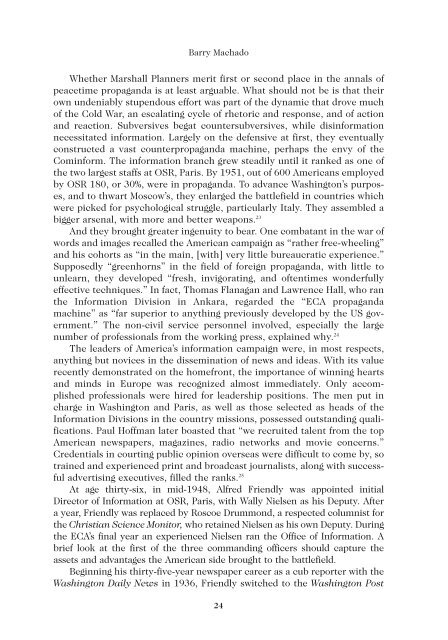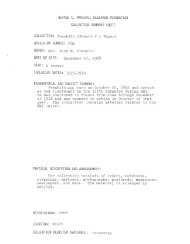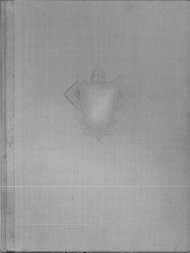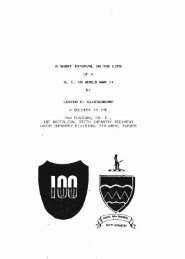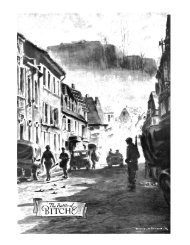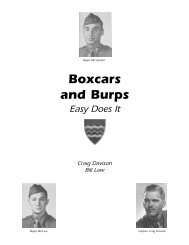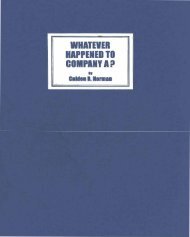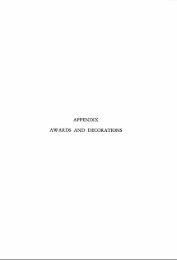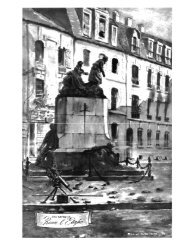Selling the Marshall Plan - The George C. Marshall Foundation
Selling the Marshall Plan - The George C. Marshall Foundation
Selling the Marshall Plan - The George C. Marshall Foundation
You also want an ePaper? Increase the reach of your titles
YUMPU automatically turns print PDFs into web optimized ePapers that Google loves.
Barry Machado<br />
Whe<strong>the</strong>r <strong>Marshall</strong> <strong>Plan</strong>ners merit first or second place in <strong>the</strong> annals of<br />
peacetime propaganda is at least arguable. What should not be is that <strong>the</strong>ir<br />
own undeniably stupendous effort was part of <strong>the</strong> dynamic that drove much<br />
of <strong>the</strong> Cold War, an escalating cycle of rhetoric and response, and of action<br />
and reaction. Subversives begat countersubversives, while disinformation<br />
necessitated information. Largely on <strong>the</strong> defensive at first, <strong>the</strong>y eventually<br />
constructed a vast counterpropaganda machine, perhaps <strong>the</strong> envy of <strong>the</strong><br />
Cominform. <strong>The</strong> information branch grew steadily until it ranked as one of<br />
<strong>the</strong> two largest staffs at OSR, Paris. By 1951, out of 600 Americans employed<br />
by OSR 180, or 30%, were in propaganda. To advance Washington’s purposes,<br />
and to thwart Moscow’s, <strong>the</strong>y enlarged <strong>the</strong> battlefield in countries which<br />
were picked for psychological struggle, particularly Italy. <strong>The</strong>y assembled a<br />
bigger arsenal, with more and better weapons. 23<br />
And <strong>the</strong>y brought greater ingenuity to bear. One combatant in <strong>the</strong> war of<br />
words and images recalled <strong>the</strong> American campaign as “ra<strong>the</strong>r free-wheeling”<br />
and his cohorts as “in <strong>the</strong> main, [with] very little bureaucratic experience.”<br />
Supposedly “greenhorns” in <strong>the</strong> field of foreign propaganda, with little to<br />
unlearn, <strong>the</strong>y developed “fresh, invigorating, and oftentimes wonderfully<br />
effective techniques.” In fact, Thomas Flanagan and Lawrence Hall, who ran<br />
<strong>the</strong> Information Division in Ankara, regarded <strong>the</strong> “ECA propaganda<br />
machine” as “far superior to anything previously developed by <strong>the</strong> US government.”<br />
<strong>The</strong> non-civil service personnel involved, especially <strong>the</strong> large<br />
number of professionals from <strong>the</strong> working press, explained why. 24<br />
<strong>The</strong> leaders of America’s information campaign were, in most respects,<br />
anything but novices in <strong>the</strong> dissemination of news and ideas. With its value<br />
recently demonstrated on <strong>the</strong> homefront, <strong>the</strong> importance of winning hearts<br />
and minds in Europe was recognized almost immediately. Only accomplished<br />
professionals were hired for leadership positions. <strong>The</strong> men put in<br />
charge in Washington and Paris, as well as those selected as heads of <strong>the</strong><br />
Information Divisions in <strong>the</strong> country missions, possessed outstanding qualifications.<br />
Paul Hoffman later boasted that “we recruited talent from <strong>the</strong> top<br />
American newspapers, magazines, radio networks and movie concerns.”<br />
Credentials in courting public opinion overseas were difficult to come by, so<br />
trained and experienced print and broadcast journalists, along with successful<br />
advertising executives, filled <strong>the</strong> ranks. 25<br />
At age thirty-six, in mid-1948, Alfred Friendly was appointed initial<br />
Director of Information at OSR, Paris, with Wally Nielsen as his Deputy. After<br />
a year, Friendly was replaced by Roscoe Drummond, a respected columnist for<br />
<strong>the</strong> Christian Science Monitor, who retained Nielsen as his own Deputy. During<br />
<strong>the</strong> ECA’s final year an experienced Nielsen ran <strong>the</strong> Office of Information. A<br />
brief look at <strong>the</strong> first of <strong>the</strong> three commanding officers should capture <strong>the</strong><br />
assets and advantages <strong>the</strong> American side brought to <strong>the</strong> battlefield.<br />
Beginning his thirty-five-year newspaper career as a cub reporter with <strong>the</strong><br />
Washington Daily News in 1936, Friendly switched to <strong>the</strong> Washington Post<br />
24


